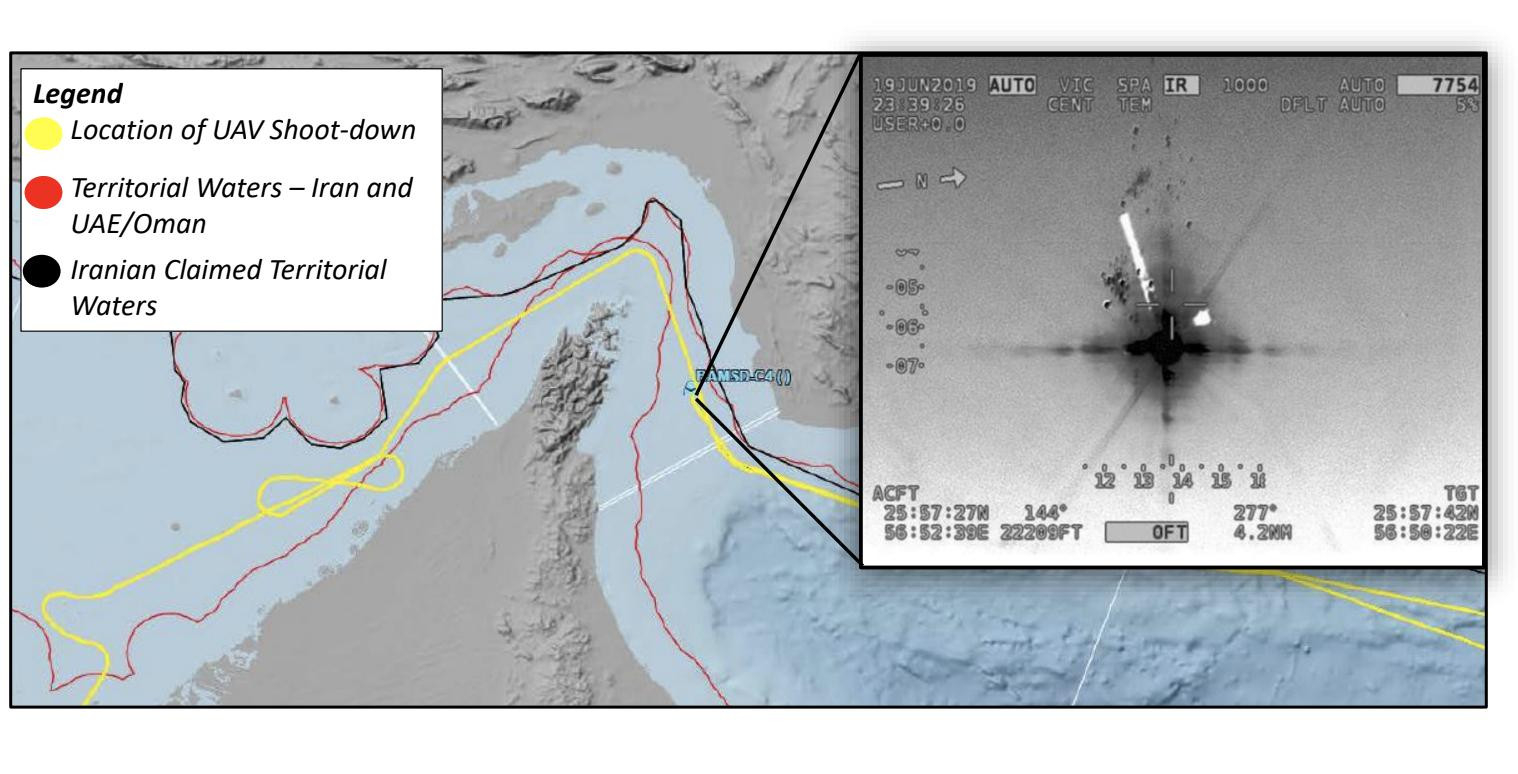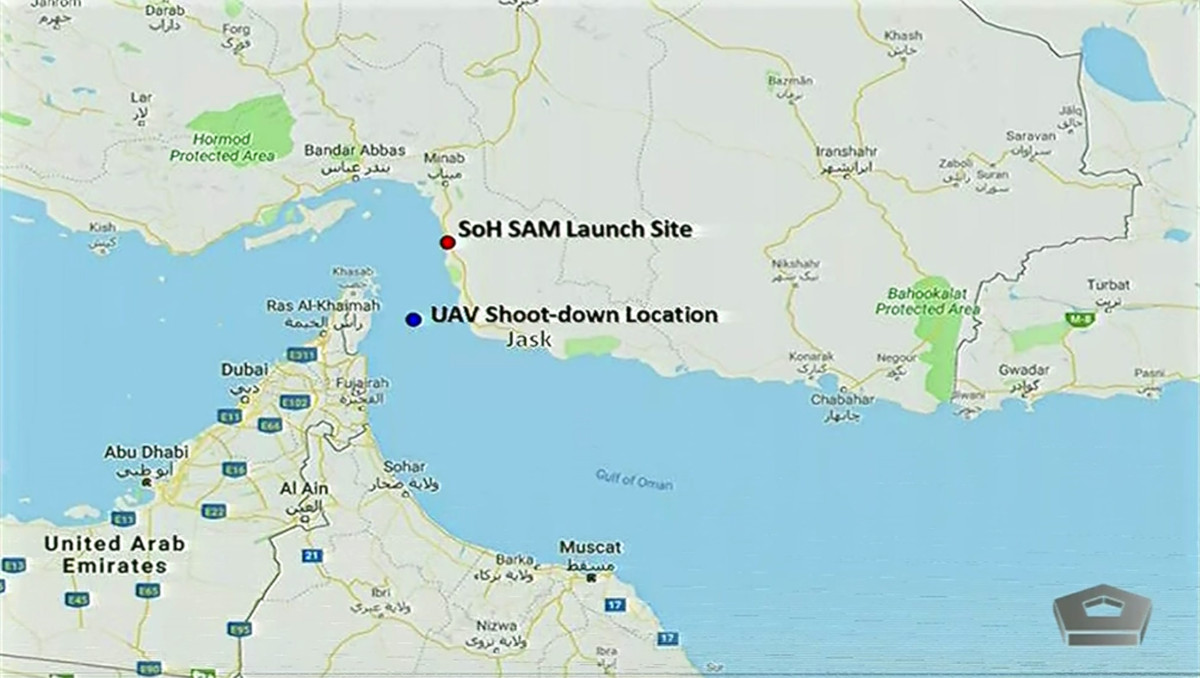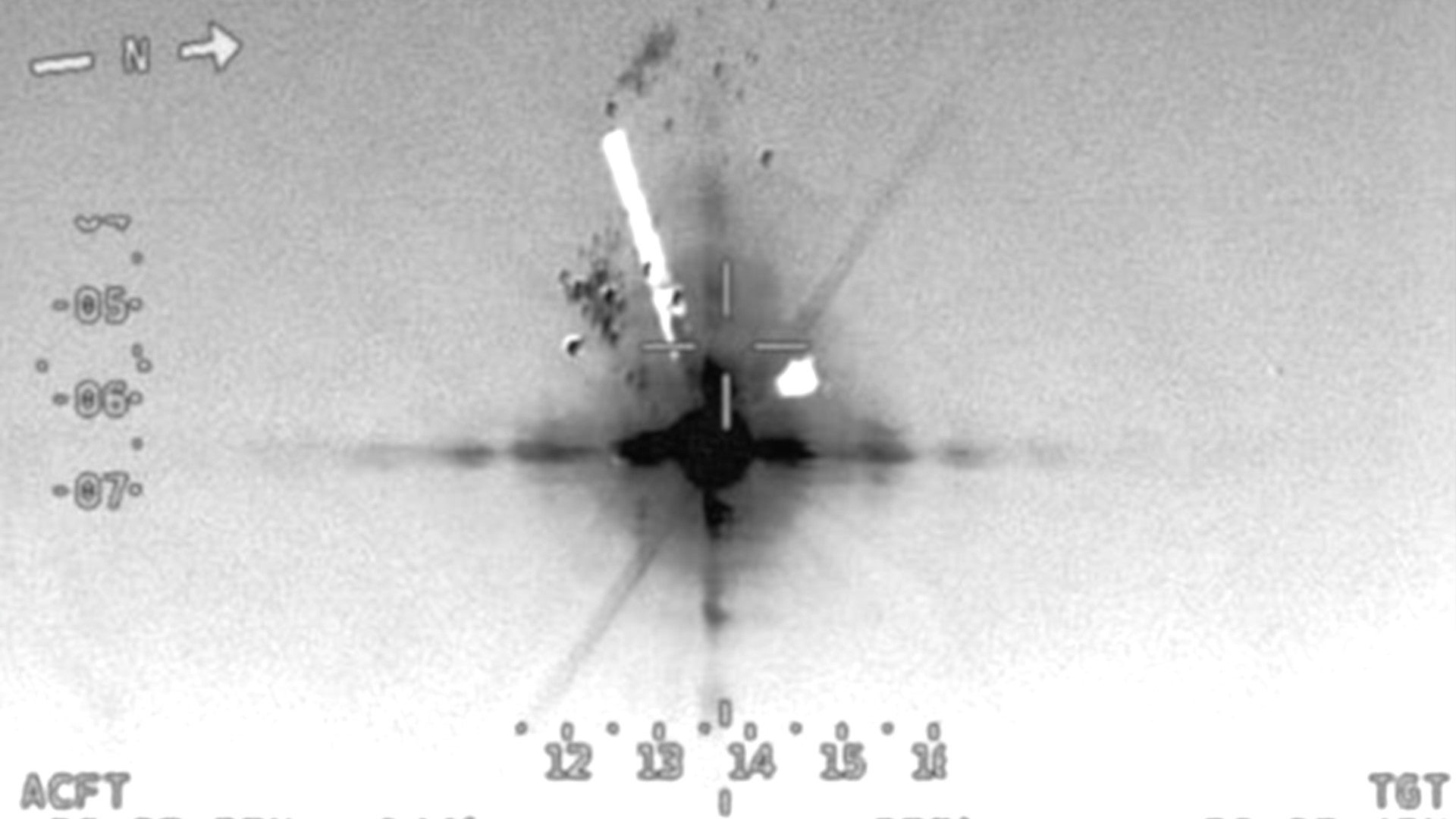Hours after Iran shot down a U.S. Navy RQ-4A Broad Area Maritime Surveillance-Demonstrator drone, or BAMS-D, flying over the Gulf of Oman, the U.S. government is considering “measured responses” to the incident, which it says was an unprovoked attack in international airspace. The United States faces difficult decisions about how exactly to respond and when. Right now, it is around 3:45 AM local time in the region and, if the U.S. military were to launch strikes in retaliation, they could be coming very soon.
It has now been close to 24 hours since the shootdown occurred. Iran does not deny destroying the drone, but claims that it had violated the country’s airspace, something the U.S. military categorically denies. The United States has now released two maps, including one showing the drone’s flight path, as well as video footage and stills of the incident. Iran has released similar material in support of its claims. You can find details about everything we’ve been able to determine so far in The War Zone‘s earlier marathon live coverage of the unfolding story.
“The UAV was fired on from Iranian soil. It was in international waters,” Senate Majority Leader Mitch McConnell, a Republican from Kentucky, told reporters after leaving a briefing for senior members of Congress at the White House on the situation regarding Iran at around 4:30 PM EST. He added that the Trump Administration was looking at unspecified “measured responses.”


The Tweet below, from Iran’s Fars News Agency shows the flight path the BAMS-D drone took according to the Iranian government.
This could potentially involve military action. The U.S. military could seek the destroy any number of symbolic targets, including those related to Iran’s air defense network, in retaliation. The specific surface-to-air missile system that Iran used to bring down the Global Hawk, the 3rd Khordad, is road-mobile and could be extremely difficult if not impossible for the United States to strike it specifically. The 3rd Khordad air defense system is a variant of Iran’s Raad, or Thunder, which is itself analogous to the Russian SA-11 Buk.

The U.S. government could also seek to launch non-kinetic attacks, such as cyber attacks, against Iran. President Barack Obama’s administration reportedly planned to launch a massive cyber warfare campaign on Iran in the event that the negotiations with the regime in Tehran over its nuclear ambitions failed. Nicknamed Nitro Zeus, this operation could disabled sections of the country’s power grid, as well as air defenses, military command and control centers, and more.
The Trump Administration could also choose a combination of diplomatic and economic options aimed at isolating Iran from the international community and global markets. In recent years, the U.S. government has already stepped up its so-called “maximum pressure” campaign against the Iranians through increasingly broad sanctions.
The question is whether or not something such as sanctions alone would be enough of a statement. There are reports that the White House is divided over how to “reestablish deterrence,” which is to say respond in such a way as to make clear to Iran that these sort of actions will not go unanswered.
Finding a truly proportional response that does not simply lead to further escalation could be especially complicated in this case. Iran did shoot down a U.S. military aircraft, but an unmanned one, so there were no casualties. U.S. strikes might cause Iranian casualties, which would be very likely to provoke a new response in kind from Tehran.
Senate Minority Leader Chuck Schumer, a Democrat from New York, told reporters that he had warned the Administration that it “may bumble into a war” after the White House meeting. He added that the Democratic Party position remains that Trump must get Congressional approval before launching any strike against Iran.
“Now I told the President that these conflicts have a way of escalating,” Schumer added. “One of the best ways to avoid bumbling into war, a war that nobody wants, is to have a robust, open debate and for Congress to have a real say.”
It is unclear if Trump actually needs Congress to sign off in this case. When the Trump Administration authorized a cruise missile barrage at targets in Syria in April 2018, which it did in response to a chemical weapon attack on innocent civilians in that country, the justification was solely based on the President’s authority to act in the national interest in has the capacity as Commander-In-Chief.
“The President could lawfully direct airstrikes on facilities associated with Syria’s chemical-weapons capability because he had reasonably determined that the use of force would be in the national interest and that the anticipated hostilities would not rise to the level of a war in the constitutional sense,” the Justice Department said in a subsequent memo. There remains considerable debate over whether this was an valid legal justification, but it is certainly one that the Administration could readily seek to apply in this particular case.
President Trump himself has indicated that he is looking to avoid conflict, but that the shootdown cannot go unanswered. “But this is a new wrinkle, a new fly in the ointment what happened, shooting down a drone. And this country will not stand for it, that I can tell you,” he told reporters during a press availability with Canadian Prime Minister Justin Trudeau who visited the White House earlier on June 20, 2019.
“You’ll soon find out,” he said in response to a question later in the day if the United States would strike Iran.
The War Zone will definitely be keeping a close eye on the situation in the coming hours.
Contact the author: joe@thedrive.com
